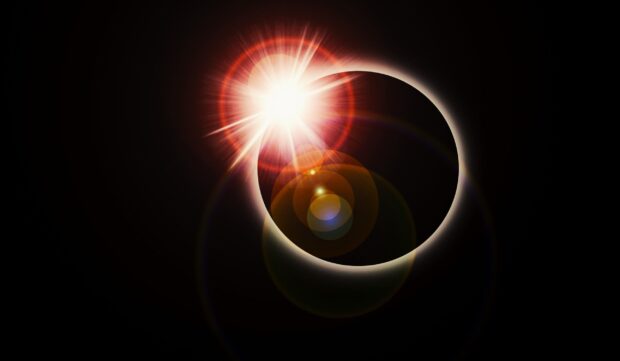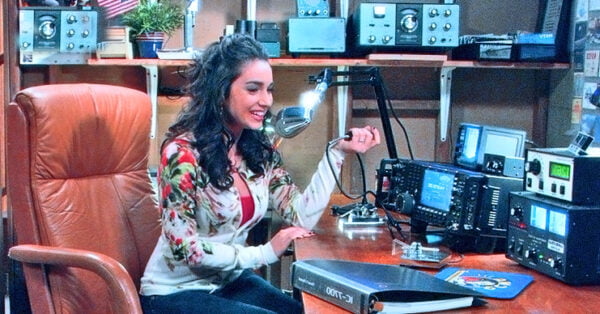Table of Contents
Table of Contents
Introduction
Year 2024 marks the arrival of a magnificent celestial occurrence—the solar eclipse on April 8th, which holds a special treat for skywatchers in North America. This cosmic event guarantees a stunning display, as the Moon completely blocks the Sun’s light for a brief period, promises to be a spectacular sight.
Millions of individuals in the United States are expected to watch it, as the moon gradually covers the sun over a span of more than two hours. Some regions of the country will have the opportunity to witness a complete solar eclipse lasting approximately three minutes.This solar eclipse will be visible across North America, treating spectators to a remarkable display of nature’s wonders. From Mexico to Canada, millions will witness the Sun transform into a glowing ring, known as the “ring of fire”.
Yet, with astronomers and fans preparing for this exceptional phenomenon, questions arise about its potential impact on our modern technologies, particularly radio communications, So, the question arises: can a solar eclipse hamper Radio communications?
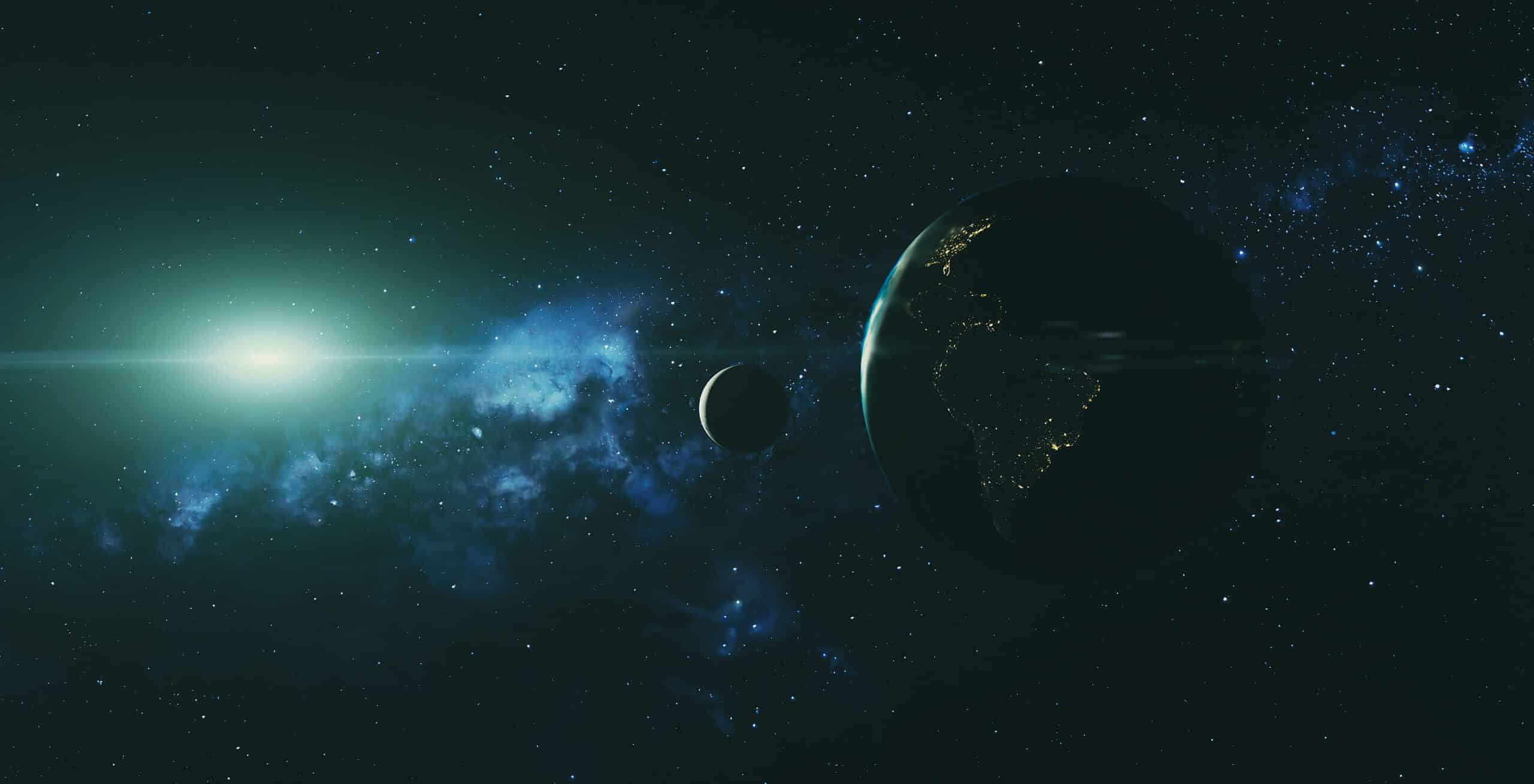
What time will it take place? What will it look like?
With the Great North American Eclipse just around the corner, New York City is eagerly anticipating the partial solar eclipse that will grace its skies on the 8th of April . Although the total phase of the solar eclipse will not be visible in NYC, the city will still experience a remarkable spectacle as the moon passes in front of the sun, gradually blocking its light and creating a partial eclipse.
The event begins at 2:10 p.m. and will last for about two and a half hours, with the moon covering almost 99% of the sun at its peak. The maximum view will occur at 3:25 p.m., when the sun will be at its most hidden, followed by the moon’s exit path at 3:58 p.m. and the event’s conclusion at 4:36 p.m. Don’t miss this rare and awe-inspiring natural event!
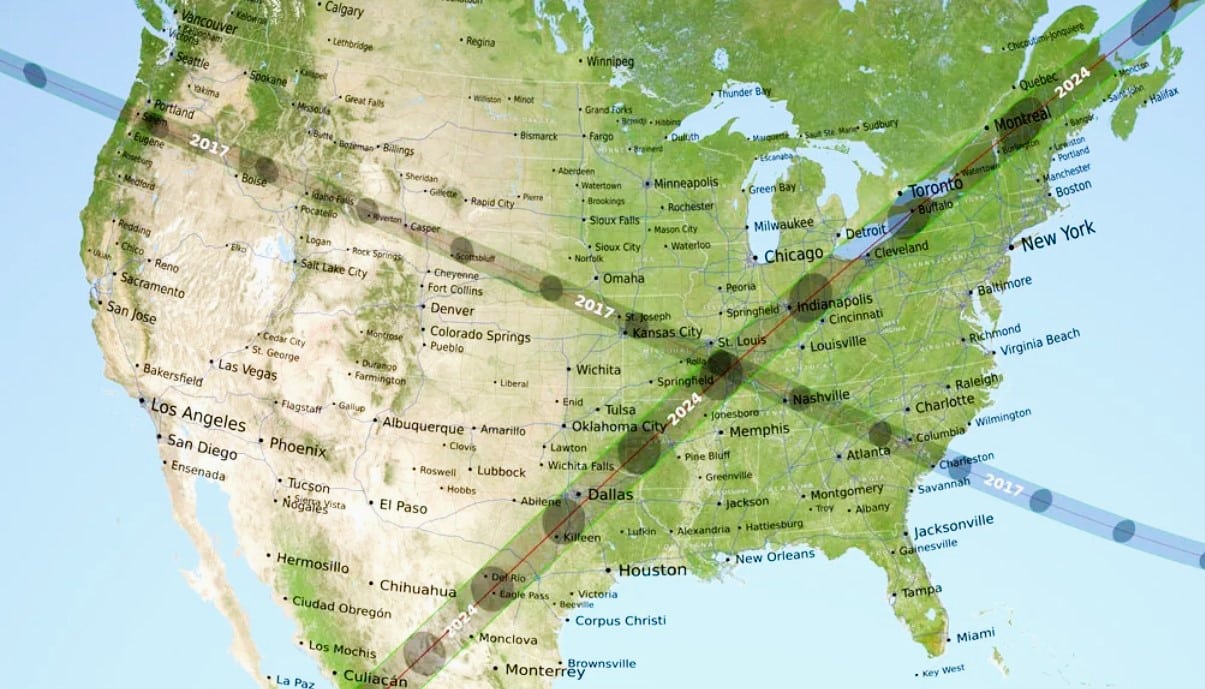
The upcoming solar eclipse will have a unique path of totality, where the moon will completely block the sun’s light, and it will be visible across a significant portion of the continental United States. This path will cover 15 states, including Texas, Oklahoma, Arkansas, Missouri, Illinois, Kentucky, Indiana, Ohio, Pennsylvania, New York, Vermont, New Hampshire, and Maine. Additionally, small parts of Tennessee and Michigan will also experience the total solar eclipse. This is the first time since 2017 that the path of totality has crossed such a large area of the continental US.
Individuals in Boston will witness a substantial improvement in the eclipse, with a 92.55% obscuration of the sun, a notable increase from the 63% seen in 2017. However, if feasible, it’s highly recommended to travel north and position oneself as close as possible to the total solar eclipse for a truly immersive experience. The eclipse’s trajectory is approximately 115 miles in width and will stretch from Mexico to Maine.
This could be even more exciting due to differences in the path and timing. Viewers can see the Moon totally block the Sun, revealing the star’s outer atmosphere, called the corona – is much wider during the upcoming total solar eclipse than it was during the eclipse in 2017.

How will the Environment change during the phenomenon?
A total solar eclipse is a rare and transformative event that can be experienced on Earth. The temperature plummets, the sky darkens, and a magnificent “golden ring of fire” appears, creating an unforgettable experience. The atmosphere cools by 8-10 degrees, as observed in previous eclipses. Birds become disoriented, thinking it’s dusk, and return to their nests. For a brief moment, the immense ball of gas that sustains life on Earth seems to dim, leaving a fleeting sense of doom. However, as the moon moves away, this feeling quickly shifts to one of heightened positivity.
Solar Eclipse Science and its impact on Radio Waves
During a total eclipse, the Moon aligns perfectly between the Earth and the Sun, casting a dark shadow on a narrow path across our planet. This path, known as the path of totality, is where observers witness the complete disappearance of the Sun’s disc. Outside this path, a partial eclipse is visible, with the Moon appearing to take a bite out of the Sun.
The Sun is a powerhouse, constantly emitting energy in various forms, including electromagnetic radiation. This radiation spectrum include a wide range, from radio waves to visible light and even X-rays. During totality, the Moon blocks this solar radiation from reaching the Earth within the path of totality.
A RADIO AMATEUR OPERATOR COMMUNICATING OVER HF- TRANSCEIVER
Impact on Electromagnetic Radio Wave Propagation
So, can this blockage affect radio communication? The answer depends on the specific type of radio wave being used. Here’s a breakdown of the principle of direct wireless Radio wave travel:
-
High-frequency (HF) radio waves: These waves, in the frequency range 3 MHz to 30 MHz can bounce off the ionosphere or reflect back to earths surface, allowing long distance worldwide direct communications. Different layers of charged particles known as ions, in the Earth’s upper atmosphere help reflect certain radio frequencies during specific times of the day and night. The Sun’s radiation ionizes this layer, i.e activates these particles, affecting its ability to reflect radio waves. These wireless communication are independent of any network, or series of networks, unlike the Mobile networks or the internet Voip communications widely used today.
-
Wave Propagation Disruption: During a total Solar eclipse, the sudden decrease in solar radiation can temporarily weaken the ionosphere, potentially causing disruptions in HF radio communication within the path of totality. However, these disruptions are usually minor and short-lived, lasting only for the duration of totality, which can range from a few seconds to several minutes.
-
Very high frequency (VHF) and Ultra-high frequency (UHF) radio waves: These waves (30 MHz to 3 GHz) have shorter wavelengths and typically travel in a straight line. As such, they are less affected by the ionosphere. Therefore, a total solar eclipse is unlikely to have a significant impact on VHF and UHF radio communication, including services like cellular phones, radio broadcasts, and satellite communications.
Sun’s rays and the earths upper atmosphere facilitate High-Frequency Wireless communications and Shortwave SW radio broadcasts. This natural characteristic and its culmination with electrical-electronic-& RF technologies has been a boon for mankind for more than a century now, which has led us to evolve more sophisticated machines and rapid progress.
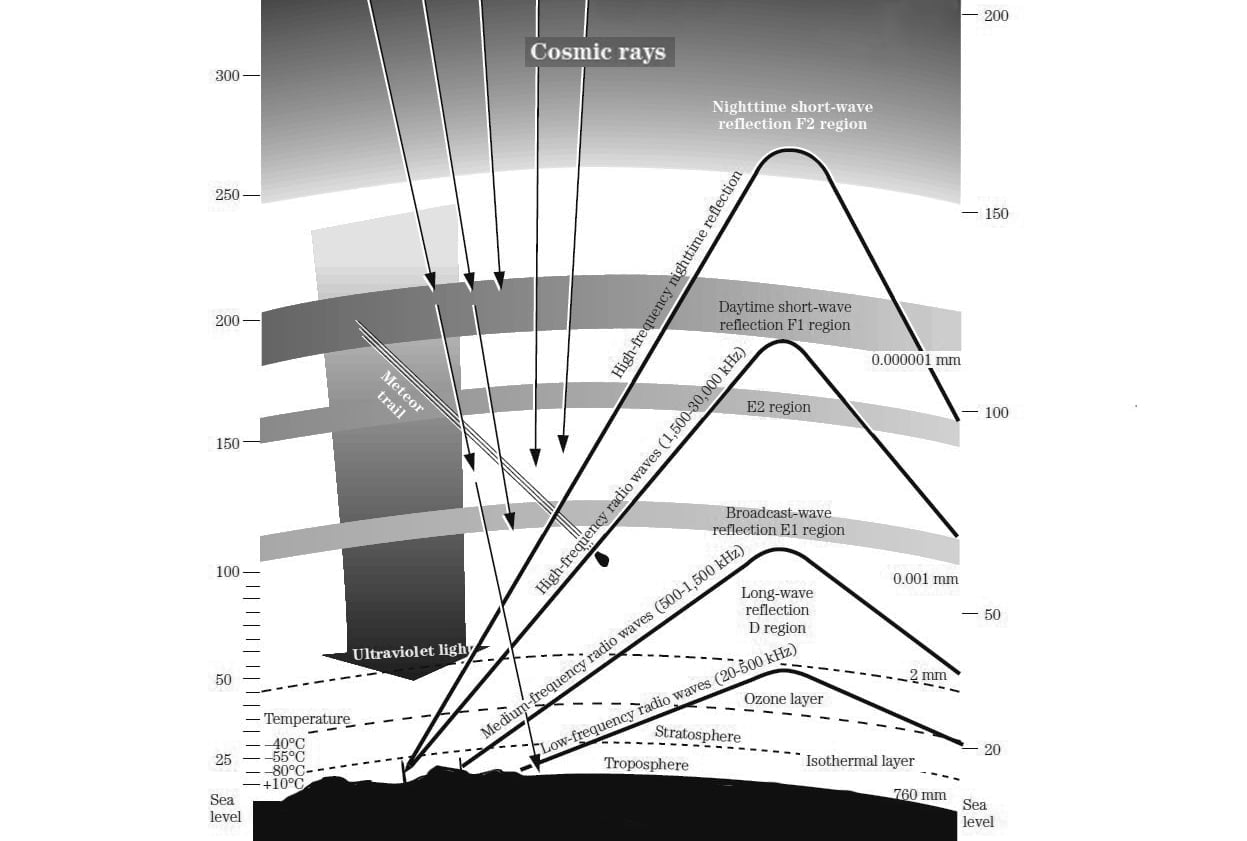
Mitigating Potential Disruptions: Steps Taken by Radio Operators
Aware of these challenges, radio operators and communication experts always prepare for solar eclipses. Advanced modeling techniques allow them to predict ionospheric disturbances and adjust radio frequencies accordingly. Additionally, contingency plans are in place to switch to alternative communication methods if disruptions occur.
Either they switch to different frequencies or modes of communication, or else maintain Radio silence during the short period. These proactive measures minimize any potential impact on vital communication during these celestial event.
Research & analysis on Radio use impacts
The Ham Radio Science Citizen Investigation, HamSCI, will conduct an extensive study of the ionosphere during the upcoming eclipse. It is a platform for the publicity and promotion of Amateur Radio activities and Advance scientific research for fostering collaborations between professional researchers and Amateur radio operators.
Through the use of HAM RADIOs, researchers will gather data on the ionosphere by communicating with individuals across the globe. According to Dr. Nathaniel Frissell, a renowned Space Physicist and Electrical Engineer, the eclipse has the potential to weaken the ionosphere, which will alter the path radio signals take to reach their destinations.
To better understand this phenomenon, HamSCI has organized various experiments, including a nationwide and International Radio Contests. As the HamSCI Lead and an Associate Professor, Dr. Frissell will oversee the event from the university’s state-of-the-art amateur radio station.

He mentioned that, this concept originated in his graduate studies and that this occasion marks his third attempt. He explained that, during an Eclipse for certain HF frequencies, communication paths becomes more challenging, but on some different frequencies communication with more distant individuals becomes possible. Additionally, there are frequencies that were previously unusable for communication but become functional during an eclipse.
These information from HAM operators collected will be shared with organizations like NASA. During the event, NASA will initiate the launch of miniature rockets equipped with scientific instruments from Virginia, which will soar into the higher atmosphere while pursuing the shadow of totality from aircrafts at high altitude. In addition, satellites and the crew aboard the International Space Station will strive to capture the spectacle from outer space.
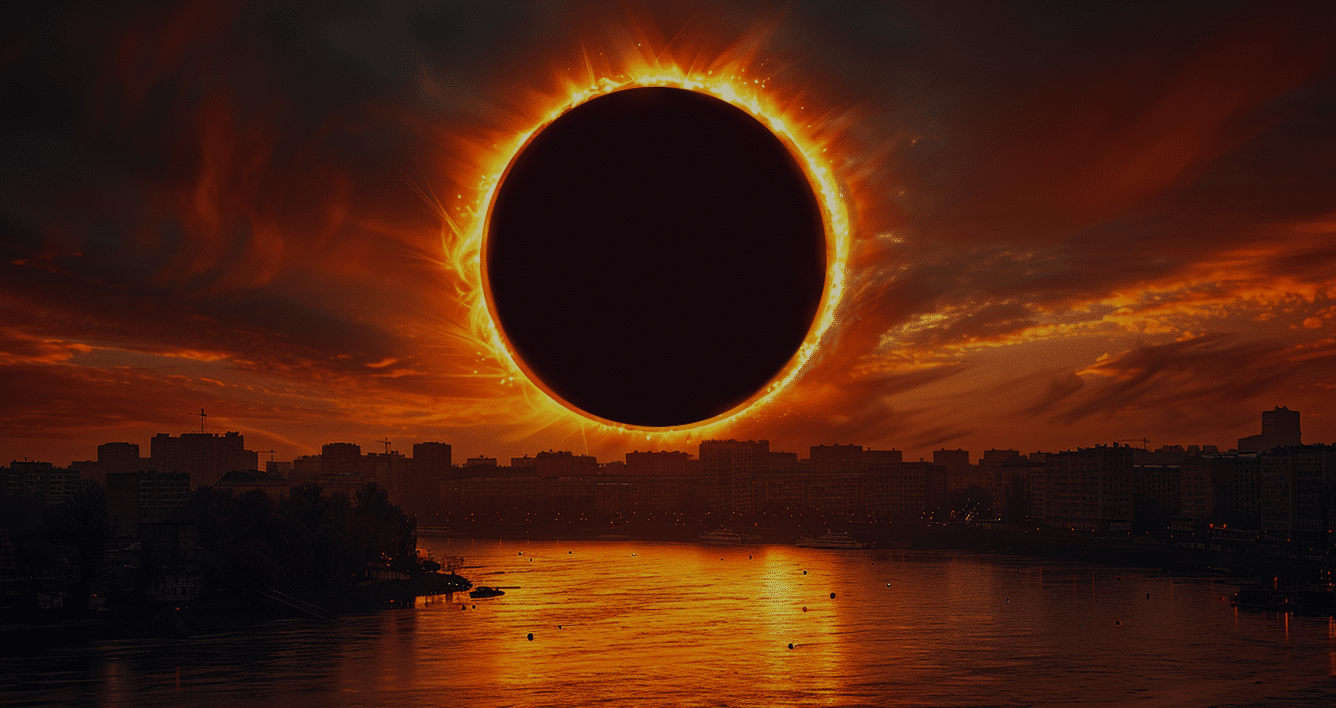
The Future and Conclusion
The next total solar eclipse will take place in 2026 and will be visible in the northern regions of Greenland, Iceland, and Spain. Total solar eclipses typically happen every one to three years, often in remote locations such as the South Pacific or Antarctic.
Total solar eclipses in North America will not occur again until 2033, when Alaska will the only place to witness totality. Following that, the next total solar eclipse will be visible in Western Canada, Montana, and North Dakota in 2044. The next coast-to-coast total solar eclipse in the United States will not happen until 2045, stretching from Northern California to Cape Canaveral, Florida.
By understanding the science behind the eclipse and its potential effects on Radio waves, we can better appreciate this celestial event and prepare for its arrival. So, mark your calendars for April 8th, 2024, and get ready to witness a celestial dance that will leave you awestruck! So, let us welcome this celestial event, and stay connected as we witness the “ring of fire” light up the skies.


